With the evolution of EVs and electronics, lithium-ion batteries require higher energy density. Traditional graphite anodes have a low theoretical capacity of 372mAh/g, limiting energy density improvement. Silicon is abundant, eco-friendly, and has a high theoretical capacity of 4200mAh/g. It is considered a promising next-generation lithium-ion battery anode material. However, severe volume expansion and low initial Coulombic efficiency hinder its practical application. Modified Silicon-Based Anode Materials can effectively improve their electrochemical performance.
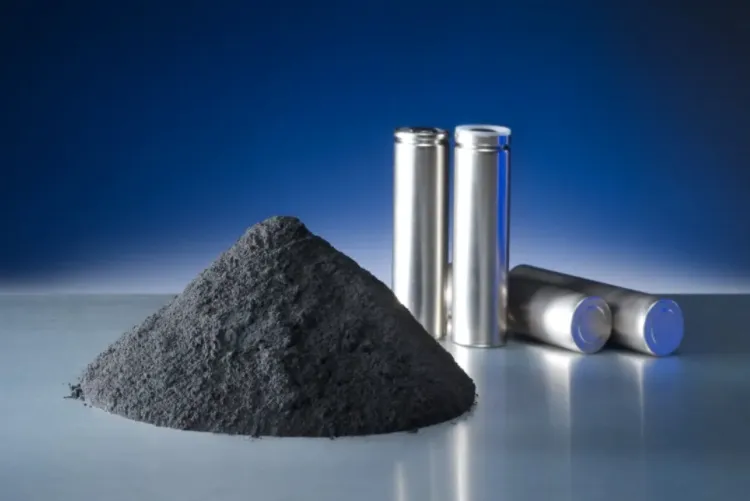
Failure Analysis of Silicon-Based Anode Lithium-Ion Batteries
Silicon is abundant in the Earth’s crust and has a high theoretical capacity of 4200mAh/g as a lithium-ion battery anode. Despite its advantages, issues arise during lithiation, such as volume expansion and reduced conductivity. The active material may fracture or pulverize, and electrode material may separate from the current collector.
When silicon-based materials are used as lithium battery anodes, silicon and lithium undergo an alloying reaction during charge and discharge. In this process, silicon volume fluctuates by 100%–300%. Changes in silicon content cause cracks in the anode material, leading to pulverization. Pulverized material detaches from the current collector, damaging the anode structure. During this period, battery capacity degradation is much faster than in conventional batteries.
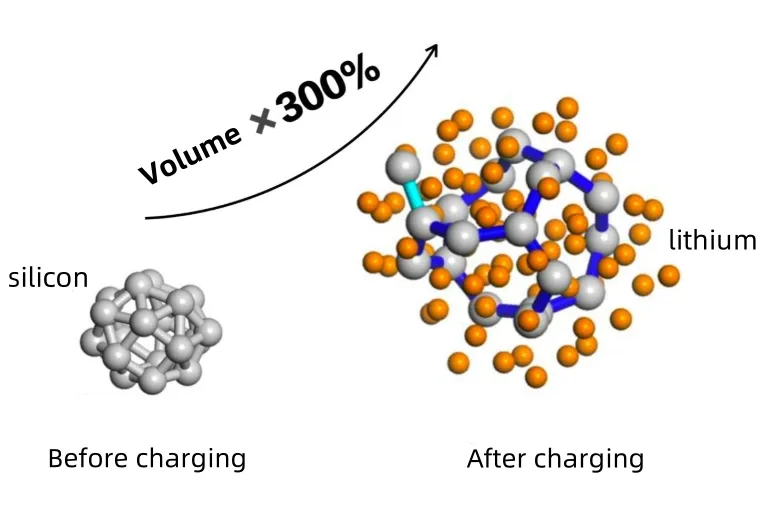
During charge-discharge cycles, silicon’s large volume fluctuations prevent the solid electrolyte interface (SEI) film from remaining intact. When the SEI film cracks, new SEI layers form, thereby consuming lithium. Continuous SEI formation leads to significant lithium loss, increasing internal resistance and rapidly reducing capacity.
Due to the low intrinsic carrier concentration of silicon, the effective release and cycle efficiency and conductivity of the battery are poor. This limits its application in the market.
Modified Silicon-Based Anode Materials
Surface modification techniques alter the chemical composition or structure of a material’s surface using chemical or physical methods, while preserving its inherent properties and imparting new surface characteristics.
Currently, Modified Silicon-Based Anode Materials techniques mainly include surface coating, surface functionalization, and artificial SEI films, all of which effectively improve the electrochemical performance of silicon-based anodes.
Surface Coating
The main mechanism of silicon surface coating is to create one or more protective layers on the silicon surface. These layers are prepared using physical or chemical methods to improve the electrochemical performance of the silicon anode. Typically, the protective layer has the following functions.
- Stabilize the silicon anode structure and suppress volume expansion to improve cycling performance.
- Serve as a barrier to reduce direct contact between silicon and the electrolyte, inhibit side reactions, and reduce Li+ consumption, improving ICE.
- The surface protective layer has the ability to transmit ions and electrons, improving the conductivity of the silicon substrate.
Silicon surface coating is considered one of the main methods for commercial silicon-carbon anode applications. Common techniques for preparing silicon surface coating precursors include wet chemical methods, mechanical ball milling, spray drying, deposition, and other similar methods. These are followed by heat treatment or direct synthesis of the coating structure.

Its main advantages are that the coating methods are diverse and easy to mass-produce.
The coating layer effectively suppresses volume expansion during the charge-discharge process, enhancing cycling performance.
Surface Functionalization
Surface functionalization of powder materials is a method for preparing materials with specific properties. It involves modifying the surface of the substrate with functional molecules to achieve homogeneity or phase separation. This approach leverages the performance advantages of both systems. The structure and function can be precisely controlled through specific methods, imparting different properties to the main material.
Currently, surface functionalization treatments address issues like silicon anode volume expansion, poor conductivity, and low ICE. The main mechanism is pre-treating the silicon surface, followed by in-situ grafting of functional groups. Surface functional groups are used to improve the electrochemical performance of silicon anodes. Surface functionalization is often applied in nanostructured silicon surface modification research.
Its primary role is to enhance interaction between modified silicon and the electrolyte. This promotes electrolyte decomposition to form a stable SEI film, improving silicon anode electrochemical performance.
Its main advantage is that the modification method is simple. Its disadvantage is that its application range is limited to nanoscale silicon.
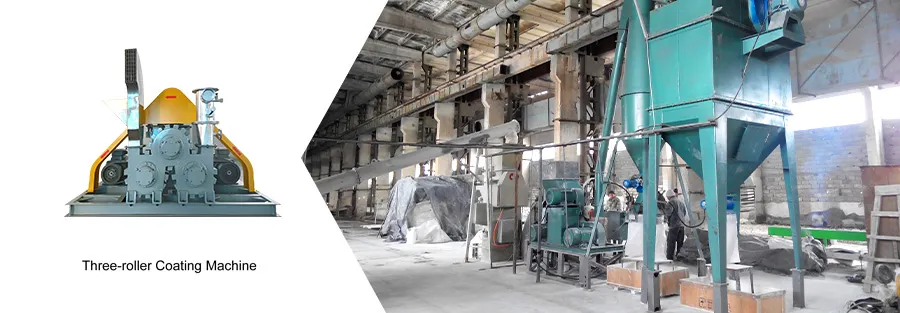
Artificial SEI Film
During the first lithium insertion, the silicon surface reacts irreversibly with the electrolyte, forming a film called the SEI film. The SEI film plays an important role by preventing further irreversible reactions, ensuring electrode reversibility. However, the formation of the SEI film consumes some Li+ and electrolyte, affecting the initial efficiency. If the SEI film is too thick, it can block Li+ transport and impact the anode’s electrochemical activity. A stable SEI film is essential for achieving high performance silicon-based anodes. The method of building an “artificial SEI” (ASEI) film forms special surface structures on silicon. This reduces side reactions and inhibits electrolyte degradation, leading to a more stable SEI film and higher ICE.
Its advantages include diverse methods and rich membrane layer models. However, the drawbacks are difficulty in controlling uniform SEI film formation and lack of scalability for production applications.
Applications of Silicon-Based Anode Materials
Silicon-based anodes are considered one of the most promising next-generation anode materials for industrialization, gaining widespread consensus in the new energy industry. Studies show that using silicon-based anodes can increase energy density by 20% to 40% compared to similar batteries available today.
From a process route perspective, silicon-based anodes are divided into silicon-carbon and silicon-oxygen anode technologies. In recent years, the application of silicon-carbon anodes has accelerated.
In 2017, Tesla applied silicon-carbon anodes in mass production of the Model 3 electric vehicle, increasing range by 20%. This demonstrated the significant impact of silicon-carbon anodes on improving battery performance and gained considerable attention. In June 2022, CATL released the Qilin battery, using silicon-carbon materials with an energy density of 255 Wh/kg. In June 2023, Tesla announced that the cumulative production of its silicon carbon 4680 battery surpassed 10 million units, marking the official mass production stage of the 4680 battery.
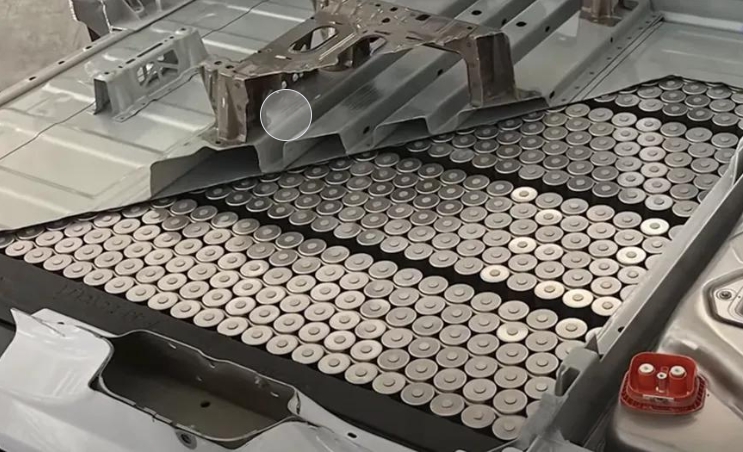
Conclusion
Driven by trends in new energy vehicles and the low-altitude economy, silicon-based anodes are gaining attention as the preferred new anode material for solid-state batteries. From current research, a single surface modification method is insufficient to comprehensively address the issues caused by silicon anode volume expansion. Additionally, some modification methods involve complex processes and high costs, making large-scale industrial application challenging.
Therefore, the future development direction may focus on synergistic optimization of multiple modification methods.
Through comprehensive applications like surface modification, effective control of silicon anode volume expansion and related issues can be achieved.
EPIC POWDER
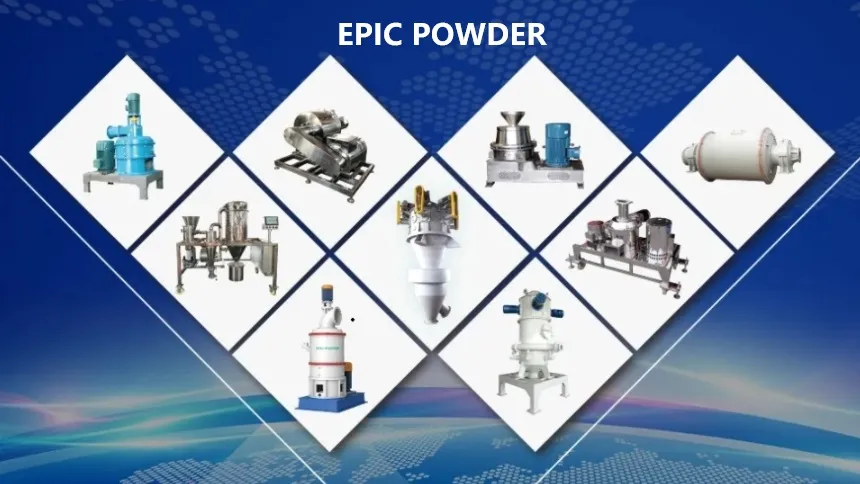
Epic Powder, 20+ years of work experience in the ultrafine powder industry. Actively promote the future development of ultra-fine powder, focusing on crushing,grinding,classifying and modification process of ultra-fine powder. Contact us for a free consultation and customized solutions! Our expert team is dedicated to providing high-quality products and services to maximize the value of your powder processing. Epic Powder—Your Trusted Powder Processing Expert !
